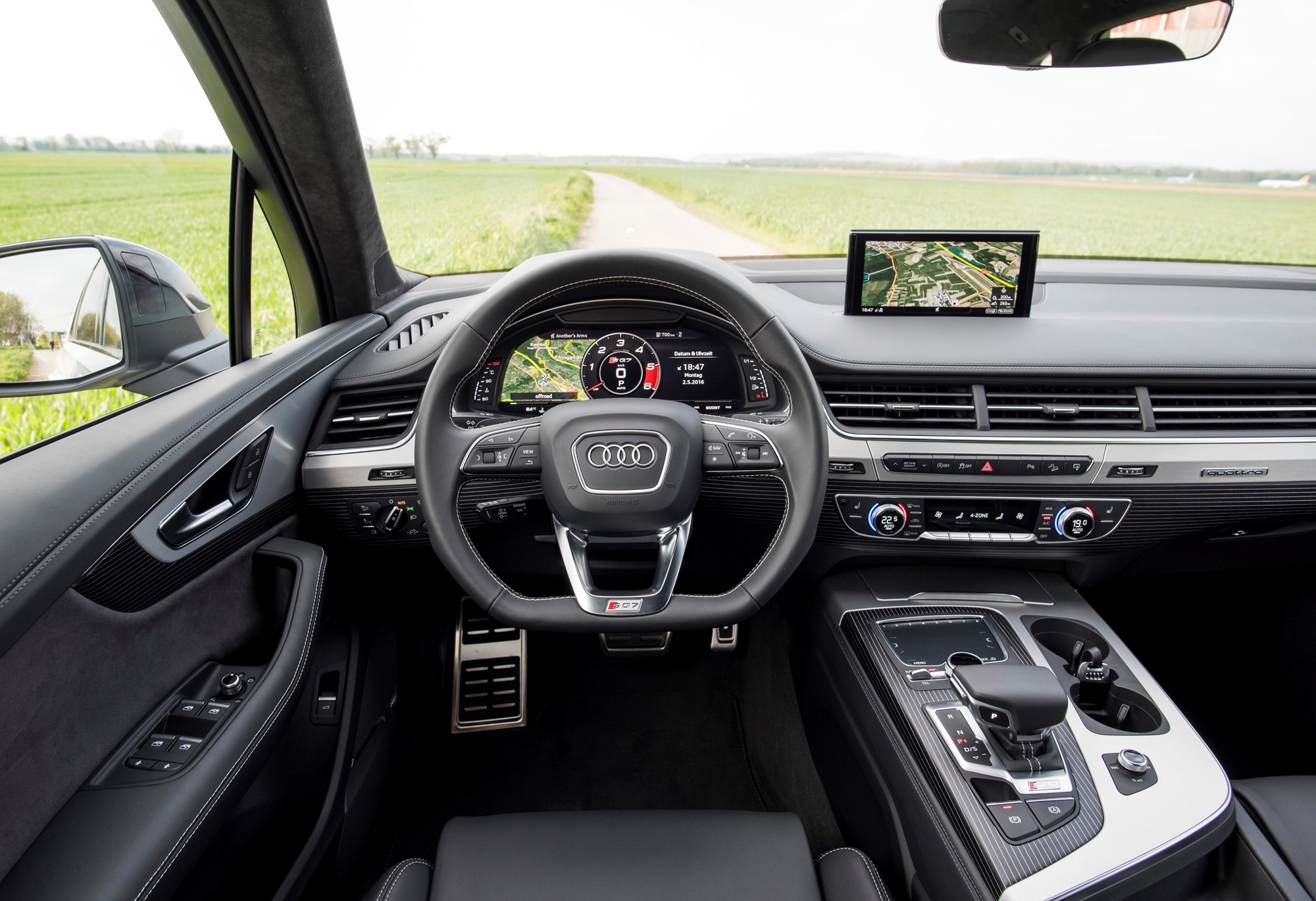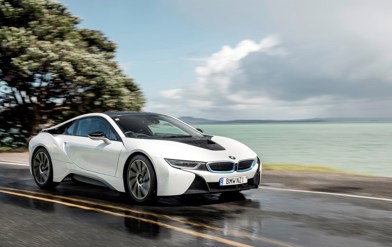SQ7 TDI: Out to impress
As far as science experiments go, Audi’s new SQ7 TDI is an effective one.
Wait a minute ... science? Isn’t this supposed to be a big, raucous turbo diesel V8 with enough Newton metres to rip a significant landmass in half?
Doesn’t the always-worth-waiting-for “S” version of Audi’s flagship Q7 SUV sound like Brian Blessed with a head cold reciting Ezekiel 25:17 a la Samuel L. Jackson?
Well, yes and yes.
But there is so much more. Because Audi has chosen the SQ7 — a model which already features masses of impressive driver assistance tech in its mainstream iteration — to showcase some interesting, future-proofing technology.
First up, there is Audi’s new 48-volt electrical subsystem. This is a first for Audi and it’s important for two reasons.
As mentioned, there are many, many driver assistance systems in this car; 24 separate systems in fact, such as the new electromechanical active roll stabilisation system which reduces body movement under hard cornering, the electromechanical power steering system, electronic chassis platform control system and the semi-autonomous traffic jam assist system which will momentarily take control of the vehicle in heavy motorway traffic.

This means a beefier 48-volt electrical subsystem is needed to run the advanced control software, leaving the standard 12-volt system to take care of “ordinary” stuff such as climate control, the entertainment system and the LED headlights. Energy is stored in a compact lithium-ion battery and a DC/DC converter connects the two systems.
The 48-volt system will become increasingly necessary for Audi because customers will expect these sorts of dynamic driver aids as the brand moves to expand its hybrid and full-electric (e-tron) model range in the coming years.
Engine software and driver aids like those featured in the SQ7 will be able to be run and relied upon without impinging on the output or — most crucially — the range of future models’ electric motors.
The SQ7 TDI features some impressive new turbocharging technology, too.
The vehicle’s twin turbochargers are controlled through Audi’s valvelift system (AVS), which appears in a TDI engine for the first time.
AVS controls when the two turbos are deployed; at low engine speeds only one turbocharger is active, then as engine speed increases AVS activates the second turbocharger for a seamless thrust of power.

Also, helping the first turbocharger spool up instantaneously from the moment the accelerator is pushed is Audi’s first electric powered compressor (EPC).
Instead of a turbine wheel, the compressor features a compact electric motor.
This accelerates the engine’s compressor wheel up to 70,000rpm in less than 250 milliseconds, complementing the initial turbo at low engine speeds. This means that the turbochargers are primed immediately, so there is no turbo lag whatsoever.
Also because the EPC supports the turbochargers with continuous boost pressure, all 900Nm of torque is available at 1000rpm.
Again, see why that 48-volt electrical subsystem is so vital?
Okay, so much for the ones-and-zeroes.
The Audi SQ7 TDI is a massively powerful car. It feels impressively fast, too, as I discovered at the model’s international media launch in France last week. Mash your foot to the floor and that instantaneous torque surge is incredibly noticeable; this is a big 2.3-ton SUV, but it pushes you back in your seat as you accelerate.
More than that, it just keeps on building; with peak torque available from 1000rpm, the spread is enormous and the car never feels like it’s going to run out of puff.
Certainly not before the mind-melting physics of a sharp right-hander in a big left-hand drive vehicle had me easing off with haste anyway.
The SQ7’s 4.0-litre bi-turbo diesel V8 engine is another new item, issuing maximum power of 320kW to match that colossal torque figure.
It’s the most powerful turbo diesel in a premium SUV and ensures this XL-sized load-lugger will sprint from zero to 100km/h in an impressive 4.8 seconds.

Despite this — and its governed top speed of 250km/h — the SQ7 TDI still manages to record frugal combined fuel economy of 7.2-litres/100km.
The noise the SQ7 makes is aggressive, as you’d expect.
The exhaust burble — assisted with synthesised sound inside the cabin and sound generation technology out back to enhance it for passers-by — satisfies the senses under acceleration, although settles to a dead hum at motorway speeds.
Shouty headlines aside, the SQ7’s styling is somewhat restrained, although I suppose that’s no bad thing.
The usual “S” attributes, such as contrasting door mirror caps and grille surround, red brake calipers and a differently styled nose still give the car a handsome look.

The latest generation Q7 is perhaps one of Audi’s most conservatively penned cars anyway, so the carmaker hasn’t set out to load the “S” model up with gaudy aggression.
Confirmed pricing for the SQ7 is yet to be announced, but Audi New Zealand tells me it is anticipating a $180,000-ish retail price — around the same RRP as a Porsche Cayenne S Diesel.
In all it’s an impressive achievement. This car boasts the attributes of a sports wagon, but with the dimensions of a large SUV.
More than that, though, it stands as a showcase for what Audi’s boffins are capable of achieving dynamically and technologically, along with the hardware they’ll use to take the brand into an increasingly electric-powered and possibly self-driven future.
AUDI SQ7 TDI
ENGINE:
4.0-LITRE BI-TURBO DIESEL V8
PRICE:
$180,000 (estimated)
Pros:Impressive test bed of new technologies, 320kW V8 that still proves suitably frugal, standard specification list extensive
Cons:Exhaust burble becomes a bit tiring in the cruise, styling quite restrained




